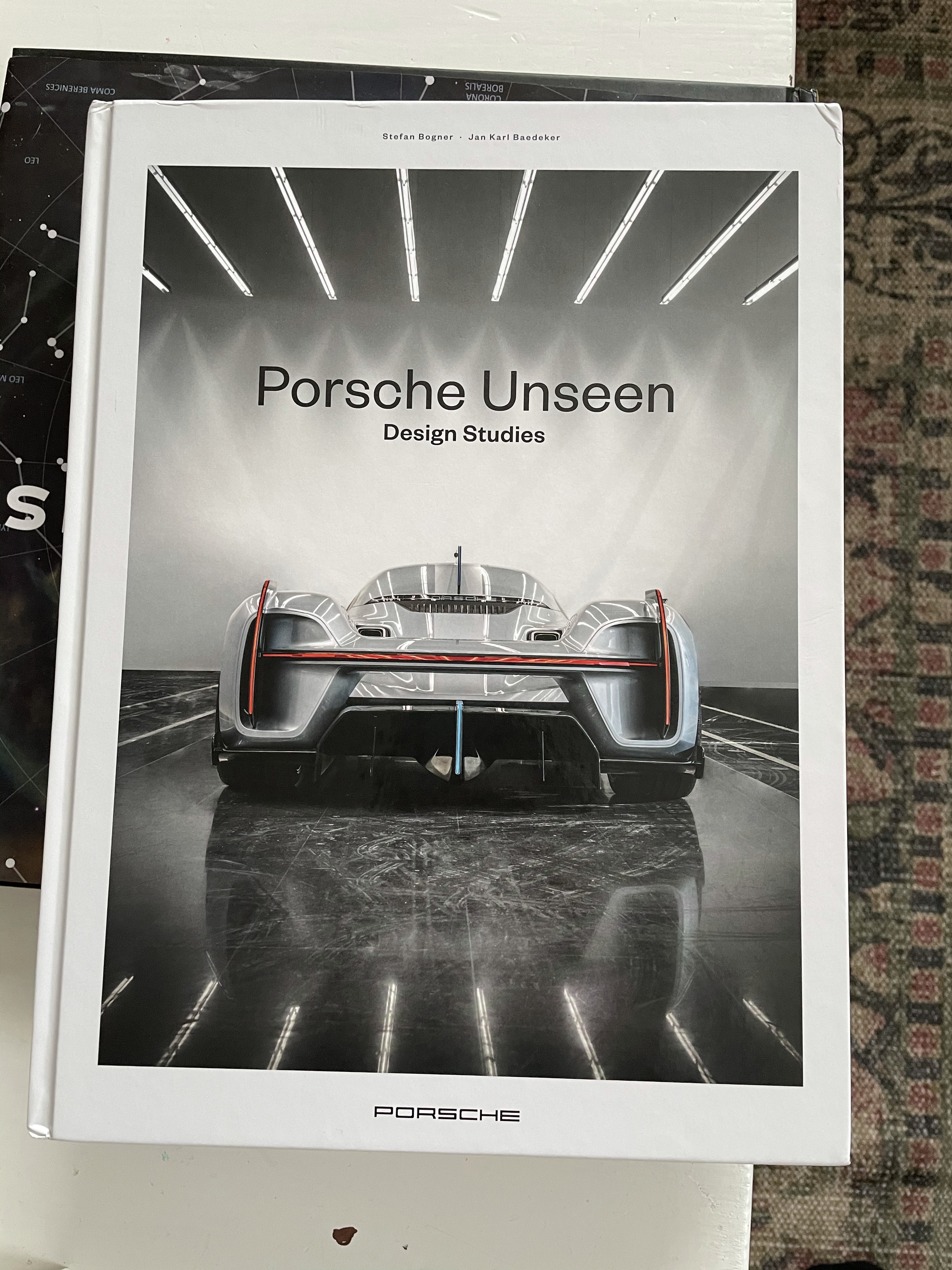
Book club for car designers part 2: book recommendations.
I actually managed to read a few car design books in the last year, one upside of lockdown it seems. There are many coffee table, or reference works on cars and even car design (in theory). A lot of these are very dry- and essentially just worth checking for photography or facts/data, but not for entertaining reading. I guess I won’t be sent any further review copies by publishers as I was very critical of the Bruno Sacco biography for example- which wasn’t a biography at all. If you would actually like to learn anything about car design I have read a few books that I would recommend (please excuse the amateur photos of the books).
The most obvious source of car design wisdom or insight, would come from an autobiography of a car designer we can assume? Due to the niche nature of this topic- these are unfortunately rare. The designers that we want to hear from are often still part of the business and the politics of the industry prevent them from sharing anything interesting. They are also much too busy to put any words to paper. Luckily we have recently been treated by one of the giants of the car design business, to a genuinely self penned autobiography of astonishing quality. Originally written in French, but translated immaculately by another car design expert (and friend of the author) Tony Lewin and published in English, this book is one of the best I have ever read on this subject. I am talking about Patrick Le Quément’s life in car design which he has shared with us and titled: Design Between the Lines.

Le Quément’s entire life is remarkable and his brilliant book is physically large and aesthetically beautiful, but contains wisdom which is more than skin deep. The book is full colour on every page, with an illustrative image hand drawn to accompany almost every story or chapter. The format of this book is hard to describe, but wonderful to read through. It is not in chronological order, but it is certainly well organised. It can be read cover to cover, but it can also be enjoyed in random order, with it’s clever self-contained chapters on topics of interest. It can be read again to let philosophies sink in, book-marked for reference by any design professor, or simply read as R&R on the beach, Only a great designer could design their own autobiography in this way, and Patrick and his contributors (a good designer makes sure counter arguments are present) have put together not just an interesting story of an interesting life, of an interesting man- they also manage to educate even this knowledgeable lecturer of vehicle design. I have learned from this book- perhaps obviously, in terms of inside stories of design projects we only knew from the outside (Renault Avantime for example) but also in terms of design methodology and tricks of the trade, explained in such clarity that concepts I knew vaguely became crystallised. I have no idea if Le Quément has found himself in any trouble over this, but he explains quite a few trade secrets and magic recipes for design in general. This book will be placed forever on my student vehicle design curriculum, but is also a very enjoyable read. What an extraordinary achievement. Much like Patrick’s design career- this is world class. Design Between the Lines should be on everyone’s shelf who has even the slightest interest in car design. Do not hesitate to buy this!

In a very slightly smaller format- but no lesser in quality in terms of paper, printing method and full colour content- we have another car designer’s autobiographical tale. This time in a much more traditional chronological, and anecdotal format. The book lives with a very lengthy title: An English Car Designer Abroad: Designing for GM, Audi, Porsche and Mazda, and was written by the very likeable Peter Birtwhistle. I say likeable, despite never meeting Peter or knowing him personally (I knew his name of course) before reading this, my first compliments to this book are that I feel that I know Peter after reading it! You don’t need to know this designers name previously to enjoy his book, as Peter humbly introduces himself. Peter was not just head of Mazda’s European design studio, he actually created it but you can read that story when you buy his book. He seems like a chap I would like to know: honest, hard working and blessed with a journey through life that I and possibly all car designers would wish for- up to a point. The title of this book struck a chord with me, as an English car designer abroad myself. The story contained within must sound very familiar to the few hundred souls that have taken a similar path as Peter, but perhaps alien to those that haven’t. Peter does a very warm welcoming job of explaining his journey for anyone to understand and enjoy. It is not a book just for the insiders, and has no industry double-speak. The gifted Mr Birtwhistle worked his way right to the top of car design and the titular references to four major car brands shows how diplomatic he is to name all that have been part of his journey. Name dropping? Wait until you read Peter’s wonderful story of why and how those companies are all important to him. There are fascinating stories from the coal-face of car design across the entire world, and all told in a very heartfelt and personal way. For example, any MX-5 fan will be fascinated by Peter’s tales of that project. Characters on the journey are described with whit and fondness, and the reader will feel they know those people too. This book educated me on car design politics and process, and it humanises the corporate. Towards the end I was genuinely moved reading of some of his family and personal troubles (trying to avoid spoilers, Peter has had triumphs and tragedies in his life). This is a book that shows us how it feels to be a car designer, the highs and the lows, the loneliness and the camaraderie. It’s an emotional journey that I was not expecting in a book on this topic. I would like to thank Peter one day in person, for opening up about his experiences. This is not a reference book in the way Le Quément’s expertly constructed book is- this is a must read for any young person aspiring to be a car designer, or any old person who wishes that they had been. You can experience what could be, or what could’ve been, through Peter’s eyes and ears, as told by him. With feeling.

Some more recommendations perhaps? Well, I was surprised by an exceptional publication about Porsche. There are many many books about this brand, but if you want the ultimate coffee table picture book for car designers look no further than Porsche Unseen (Stefan Bogner). This book is light on text, but it truly shows an inside view of the Porsche design studio as it operates right now, including jovial summer parties… Their design process is explained well, in slightly marketing heavy language, but then we are treated to conceptual projects from years gone by which would never normally be shared with the public. All car studios work in this way, and all car companies create many designs that are never revealed. Porsche decided to lift the veil, so don’t miss your chance to look underneath it.

Classics…
Maybe readers can add in the comments section other car design titles that you recommend. One of my all time favourites is the tiny photo book by Stephen Bayley. CARS: etc etc…

Regular reading?
Last of all- if you are interested in car design, there are two print publications you must subscribe to. One is a true work of art, and is essentially a quarterly book. It’s called The Road Rat, and inside there is always a lot of content on car design and its history, mostly written by car designers themselves. The other is the only publication in the world (excluding the Car Design News printed magazine, Interior Motives) which exclusively covers car design, and that is the classic Auto & Design magazine. It is unfortunately lightweight in text, as it must squeeze in two languages – but the images (a lot fo sketches) are unique insights to the design process.


